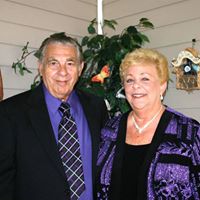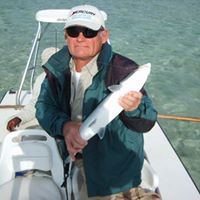Richard D Molnar
age ~77
from Peyton, CO
- Also known as:
-
- Richard Dennis Molnar
- Rich D Molnar
- Rich Cristina Molnar
- Dennis Molnar Rich
- Molnar Rich
Richard Molnar Phones & Addresses
- Peyton, CO
- Cleveland, OH
- Macedonia, OH
- Akron, OH
Name / Title
Company / Classification
Phones & Addresses
RICHARD A. MOLNAR, LLC
Vehicle Records
-
Richard Molnar
view source -
Address:911 Parkleigh Dr, Parma, OH 44134
-
Phone:(440)2231650
-
VIN:1C4NJCEB0CD719261
-
Make:JEEP
-
Model:COMPASS
-
Year:2012
Resumes

Eng At Linde Gaz Romania
view sourcePosition:
Key Account Application Engineer at Linde Gaz Romania
Location:
Timis County, Romania
Industry:
Chemicals
Work:
Linde Gaz Romania since Dec 2002
Key Account Application Engineer
Linde Gaz Romania Sep 1998 - Jun 2001
Application Manager
Linde Gaz Romania Dec 1997 - Aug 1998
Sales Engineer
Institute of Welding and Materials Testing, Timisoara, Romania Sep 1992 - Dec 1997
Researcher
Key Account Application Engineer
Linde Gaz Romania Sep 1998 - Jun 2001
Application Manager
Linde Gaz Romania Dec 1997 - Aug 1998
Sales Engineer
Institute of Welding and Materials Testing, Timisoara, Romania Sep 1992 - Dec 1997
Researcher
Education:
Universitatea „Politehnica” din Timișoara 1995 - 1998
Phd, Materials Science Universitatea „Politehnica” din Timișoara 1987 - 1992
MSc, Engineering
Phd, Materials Science Universitatea „Politehnica” din Timișoara 1987 - 1992
MSc, Engineering

General Manager
view sourceLocation:
Cleveland, OH
Industry:
Mechanical Or Industrial Engineering
Work:
The Technology House
General Manager
General Manager

Richard Molnar
view sourceLocation:
Cleveland, OH
Industry:
Medical Devices
Work:
Norman Noble, Inc.
Manufacturing Engineering Manager
Manufacturing Engineering Manager
Skills:
Manufacturing
Medical Devices
Lean Manufacturing
Continuous Improvement
Six Sigma
Process Improvement
Quality System
Root Cause Analysis
Fmea
Spc
Medical Devices
Lean Manufacturing
Continuous Improvement
Six Sigma
Process Improvement
Quality System
Root Cause Analysis
Fmea
Spc

Cyclotron Engineer
view sourceLocation:
Cleveland, OH
Industry:
Hospital & Health Care
Work:
Energy Focus Inc. Mar 2014 - Feb 2015
Photometry
Siemens Healthcare Mar 2014 - Feb 2015
Cyclotron Engineer
Intertek Feb 2012 - Feb 2014
Associate Engineer
Steris Corporation Nov 2011 - Feb 2012
Senior R and D Technician
Fmi Technologies Inc. Mar 2011 - Sep 2011
Senior Manufacturing and Engineering Technician
Photometry
Siemens Healthcare Mar 2014 - Feb 2015
Cyclotron Engineer
Intertek Feb 2012 - Feb 2014
Associate Engineer
Steris Corporation Nov 2011 - Feb 2012
Senior R and D Technician
Fmi Technologies Inc. Mar 2011 - Sep 2011
Senior Manufacturing and Engineering Technician
Skills:
Electronics
Testing
Manufacturing
Troubleshooting
Test Equipment
Engineering
R&D
Pcb Design
Product Development
Debugging
Spectrum Analyzer
Design For Manufacturing
Calibration
Fda
Logic Analyzer
Signal Generators
Software Documentation
Electrical Engineering
High Voltage
Rf
Hardware Architecture
Orcad
Soldering
Meters
Ce Marking
Testing
Manufacturing
Troubleshooting
Test Equipment
Engineering
R&D
Pcb Design
Product Development
Debugging
Spectrum Analyzer
Design For Manufacturing
Calibration
Fda
Logic Analyzer
Signal Generators
Software Documentation
Electrical Engineering
High Voltage
Rf
Hardware Architecture
Orcad
Soldering
Meters
Ce Marking
Interests:
Research and Developement
Wood Working
Boating
Fly Fishing
Milling
Electronics
Researching High Energy Physics
Lathe
Detecting Nuclear Events
Technical Reading
Metal Working
Machine
Particle Accelerators
Rebuilding Boats
See +See Less
Wood Working
Boating
Fly Fishing
Milling
Electronics
Researching High Energy Physics
Lathe
Detecting Nuclear Events
Technical Reading
Metal Working
Machine
Particle Accelerators
Rebuilding Boats
See +See Less

Richard Molnar
view source
Richard Molnar
view sourceUs Patents
-
Process Controller Single Memory Chip Shadowing Technique
view source -
US Patent:54106656, Apr 25, 1995
-
Filed:Jun 13, 1994
-
Appl. No.:8/259087
-
Inventors:Richard J. Molnar - Willoughby OH
-
Assignee:Elsag International B.V. - Amsterdam Zuidoost
-
International Classification:G06F 1200
-
US Classification:395400
-
Abstract:A process and apparatus for shadowing memory uses a single memory chip which is addressable into an address field which is smaller than the memory chip. A program having a main control portion is programmed into a main memory area of the memory chip and is directly connected to a main address space of the address field. The program also includes a plurality of secondary program portions which can be used one at a time with the main control portion of the program. Each of the secondary program portions is stored in a separate secondary and shadowed memory area of the memory chip. A secondary address space of the address field which is large enough to accommodate only one secondary memory area at a time, is controlled so as to be latched to only one secondary memory area at a time. Latching is achieved through higher bits of address locations in a selected portion of the address field. Interrupt and power-up routines are provided in the main portion of the program to avoid entering and leaving the program through different secondary program portions.
-
Method And Apparatus For Performing Supervisory Functions In Digital Systems And Obtaining Diagnostics Thereof
view source -
US Patent:55287565, Jun 18, 1996
-
Filed:Jan 30, 1995
-
Appl. No.:8/380497
-
Inventors:Richard J. Molnar - Willoughby OH
-
Assignee:Elsag International N.V. - Amsterdam
-
International Classification:G06F 1134
-
US Classification:39518508
-
Abstract:Digital supervisory and diagnostic circuitry to provide a watchdog function and a low voltage detect function and diagnostics for those functions. The watchdog function has a high immunity to EMI and RFI disturbances and may be enabled or disabled as necessary. An indication is provided of the cause of the last reset so that a reset due to EMI can be distinguished from a reset due to a power failure. The low voltage detect circuitry is implementable in an integrated circuit chip. The low voltage detect circuitry eliminates oscillations from the reset signal and provides a delay which is programmable by the user. The circuitry is designed so that the length of the delay can never be zero.
-
Method And Apparatus For Extending The Resolution Of A Sigma-Delta Type Analog To Digital Converter
view source -
US Patent:54103100, Apr 25, 1995
-
Filed:Apr 4, 1994
-
Appl. No.:8/222426
-
Inventors:Richard J. Molnar - Willoughby OH
-
Assignee:Elsag International N.V. - Amsterdam
-
International Classification:H03M 302
H03M 120
H03M 150 -
US Classification:341143
-
Abstract:A sigma-delta technique is used to generate a digital representation of the incoming analog signal amplitude. The integration stage of the converter holds an analog error term relative to the ratio of an incoming analog input signal to a reference voltage. The incoming analog signal is disconnected at the end of the conversion. The error term is monitored through a comparator as charge packets are applied to the input of the integration stage. The number of charge packets needed to have the error term cross zero provides information which can be used to extend the resolution of the analog to digital converter.
-
Method And Apparatus For Obtaining Process Characteristics In A Self-Tuning Controller
view source -
US Patent:52821307, Jan 25, 1994
-
Filed:May 20, 1992
-
Appl. No.:7/886686
-
Inventors:Richard J. Molnar - Willoughby OH
-
Assignee:Elsag International B.V. - Amsterdam Zuidoost
-
International Classification:G05B 1302
-
US Classification:364157
-
Abstract:The characteristics of the field process system controlled by a self tuning controller are obtained by analyzing the open loop response of the process variable to a step applied at the controller's control output. A first-order system response with pure time delay is used to approximate a higher-order field process system's actual response. The overall deadtime and time constant of the first-order approximation are determined. The maximum slope of the process variable response to the step is stored along with an assigned time of its occurrence and an assigned process variable. The stored information is used to approximate the overall deadtime. In one embodiment the stored information is assumed to be the data obtained from a second-order response having a 10:1 time constant ratio and is used to find the assumed second-order time constants which are used to find the first-order time constant. In a second embodiment the first order time constant is determined by using a convergence point falling within a predetermined range between the actual response data and the first-order approximation. The step is not applied to the control output until the process variable has reached the initial steady state condition and the calculation of slope ceases when the process variable response reaches the final steady state condition.
-
Method And Apparatus For Performing Carrier Detection
view source -
US Patent:59129298, Jun 15, 1999
-
Filed:Mar 27, 1997
-
Appl. No.:8/827162
-
Inventors:Richard J. Molnar - Mentor OH
Joseph C. Nemer - Mayfield Heights OH -
Assignee:Elsag International N.V. - Amsterdam
-
International Classification:H04L 2714
H04L 2716
H04L 2722 -
US Classification:375326
-
Abstract:A digital implementation for a carrier detector. The detector determines if the carrier frequency at any instant is within a predetermined frequency band. The detector further determines if the detected frequency remains within the predetermined frequency band for a predetermined period of time. The detector also provides an indication that there has not been any loss of carrier for another predetermined period of time.
-
Method And Apparatus For Digitally Processing And Filtering Signals In Industrial Control Applications
view source -
US Patent:53393350, Aug 16, 1994
-
Filed:Dec 15, 1992
-
Appl. No.:7/990516
-
Inventors:Richard J. Molnar - Willoughby OH
-
Assignee:Elsag International B.V. - Amsterdam
-
International Classification:H04B 110
-
US Classification:375103
-
Abstract:A device which is a combination of a method and apparatus and a filter, such as but not limited to, a conventional lag filter for digitally processing and filtering signals used in industrial control applications. The method and apparatus provides a factor which is used by the filter to process the digital signal at the input to the device. The method determines if the change in the input signal is either due to noise or a valid signal change. Information which gives a past analysis of the trend in direction of the signal at the input to the device is used in the method. The trend information includes a factor representative of the past history of the trend. The method uses the most recent trend indicator to determine to a reasonable degree of confidence if the signal currently at the input to the device is or is not characteristic of noise. If the signal at the input is not believed to be characteristic of noise, then the method adjusts the trend indicator by a tracking credit. The tracking credit is, in effect, a further degree of confidence that change in the input signal is not characteristic of noise.
-
Process Command Controller
view source -
US Patent:D3262359, May 19, 1992
-
Filed:Jan 22, 1990
-
Appl. No.:7/468994
-
Inventors:Edward Bastijanic - Concord OH
Richard J. Molnar - Willoughby OH
David J. Wroblewski - Mentor OH -
Assignee:Elsag International B.V.
-
US Classification:D10 75
-
Digital/Frequency Input For Industrial Control Applications
view source -
US Patent:50685457, Nov 26, 1991
-
Filed:Apr 20, 1989
-
Appl. No.:7/340984
-
Inventors:Richard J. Molnar - Willoughby OH
-
Assignee:Elsag International B.V. - Amsterdam
-
International Classification:H03K 342
H03K 500
H03K 508
H01S 300 -
US Classification:307311
-
Abstract:An input circuit for conditioning a control signal having a variety of waveforms and voltage levels, comprises a pair of input terminals having a metal oxide varistor connected thereacross. One terminal is connected to the base of a transistor thru a resistor, the emitter of the transistor driving an opto-coupler for isolating the control signal from a micro-processor which receives the control signal over an inverter having a schmitt trigger input.
Classmates

Richard Molnar
view sourceSchools:
Central Catholic High School Norwalk CT 1962-1966
Community:
Maureen Higgins, Vincent Soares, Carol Hanscome, Heidi Proehl

Richard Molnar
view sourceSchools:
William C. Bryant High School Long Island City NY 1955-1959
Community:
Richard Martin

Central Catholic High Sch...
view sourceGraduates:
Richard Molnar (1962-1966),
Robert Lepine (1976-1980),
Sean Condren (1984-1988)
Robert Lepine (1976-1980),
Sean Condren (1984-1988)
Youtube
Flickr
Myspace
Googleplus

Richard Molnar
Education:
The University of Akron School of Law - Law, The University of Akron - Marketing

Richard Molnar
Work:
M3 Mechanical - C.O.O

Richard Molnar
Work:
Prowler Guard - Surveillance Systems Technician

Richard Molnar

Richard Molnar

Richard Molnar

Richard Molnar

Richard Molnar
Work:
Linde Gaz Romania
Education:
Universitatea Politehnica Timisoara - Utilajul si Tehnologia Sudarii

Richard John Molnar
view source
Richard Molnar
view source
Richard Molnar
view source
Molnar Richard
view source
Richard Molnar
view source
Richard Molnar
view source
Richard Molnar
view source
Richard Molnar
view sourceGet Report for Richard D Molnar from Peyton, CO, age ~77
















